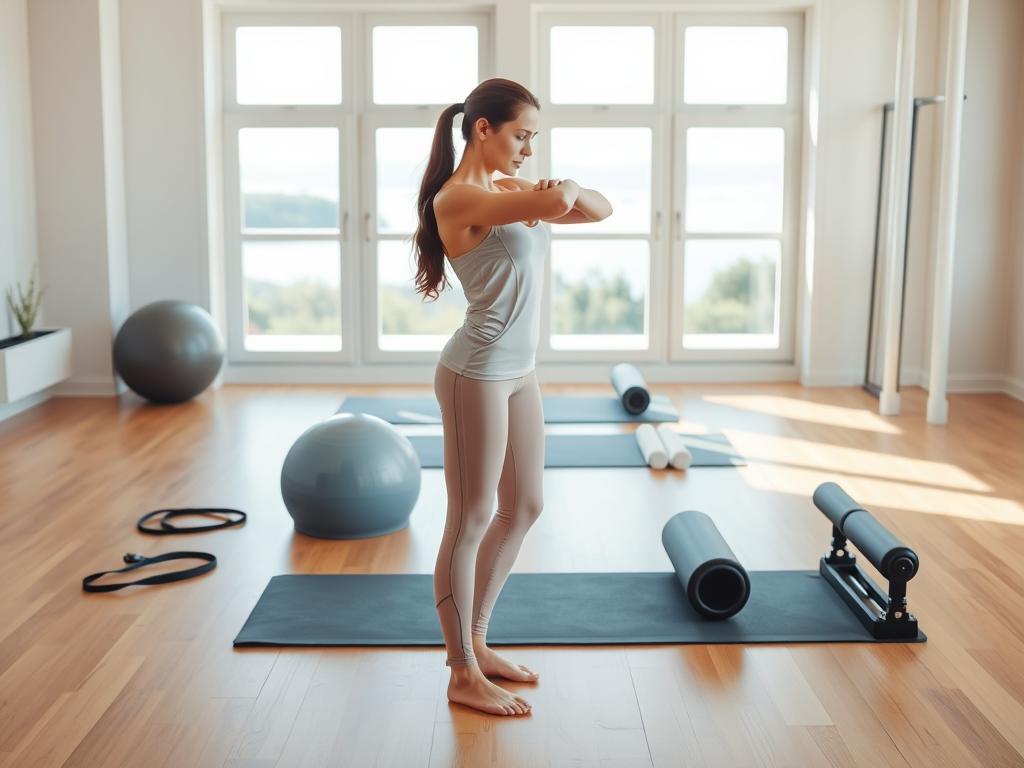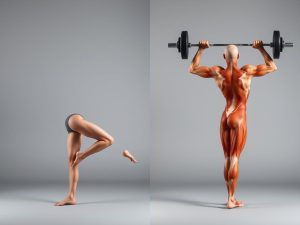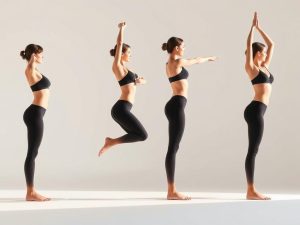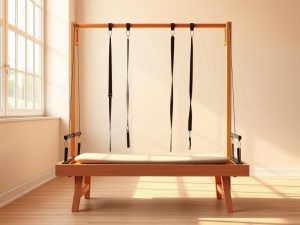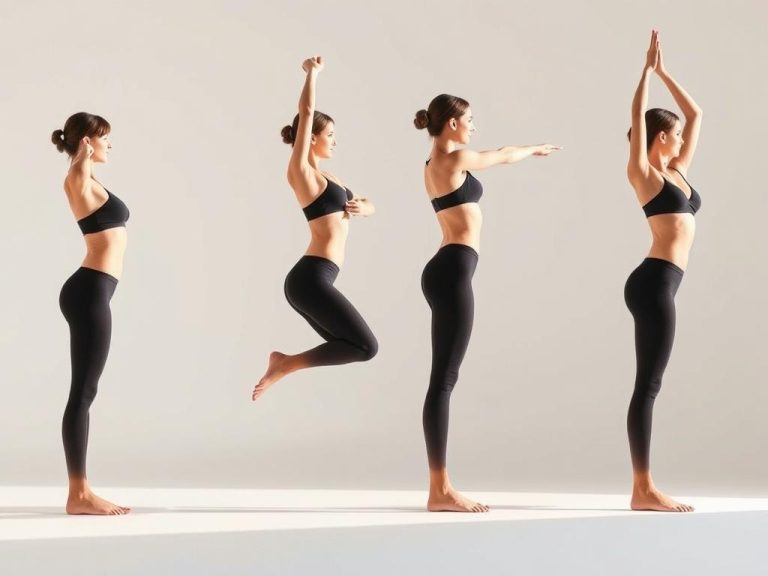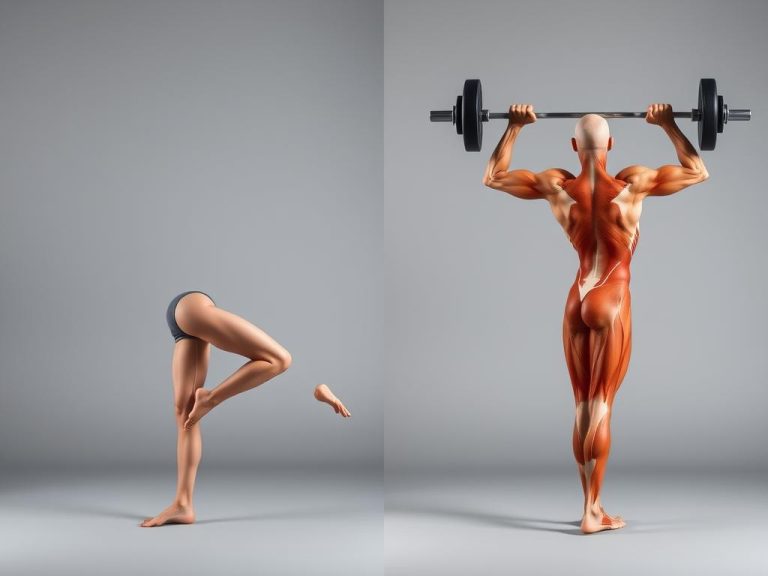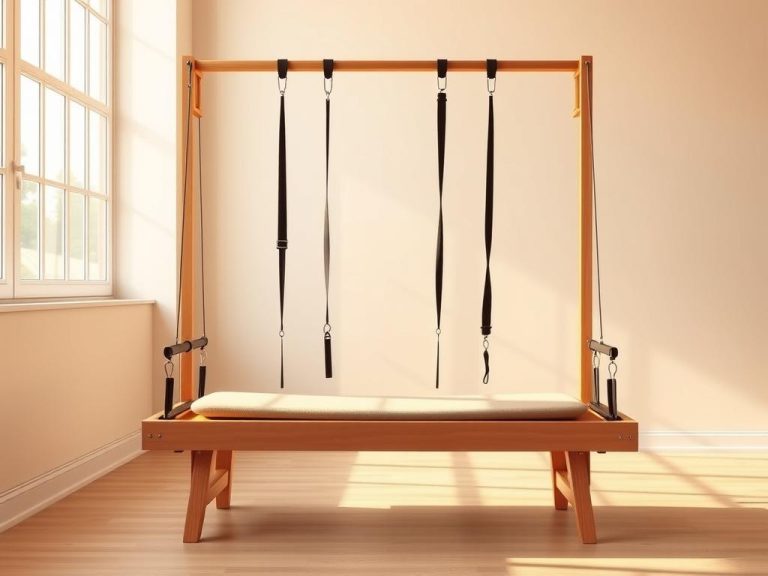Pilates Essentials: What You Need to Get Started
Pilates offers an exciting path to fitness and wellness for all. This low-impact exercise system builds core strength and improves flexibility. It also enhances overall body alignment12.
Beginners will find a transformative approach to fitness beyond traditional routines. Pilates can reduce stress, aid weight management, and improve posture. Its minimal requirements make it attractive for fitness newcomers21.
Comfortable, form-fitting clothes that allow free movement are essential for Pilates. Most studios provide the necessary equipment for classes. This setup reduces barriers for those new to the practice31.
Pilates is versatile, offering a personalised fitness journey. It includes mat work and apparatus-based training. These options suit different preferences and fitness goals1.
Whether you aim to strengthen your core or improve flexibility, Pilates is welcoming. It adapts to your needs, providing a comprehensive workout experience2.
Understanding the Fundamentals of Pilates Practice
Pilates is a unique exercise method that enhances strength, flexibility, and mental awareness. It offers a holistic approach to physical wellness through its distinctive Pilates principles.
Pilates training centres on key elements that distinguish it from other workout methods. Regular practice can greatly boost physical abilities4.
- Enhanced core strength
- Improved flexibility
- Better balance and coordination
- Increased mental clarity
Core Principles of Pilates Training
Pilates involves about 50 simple, repetitive exercises designed to create muscular exertion5. It focuses on precise, controlled movements that engage multiple muscle groups at once6.
Practitioners develop a deeper understanding of body mechanics and movement patterns4.
Benefits for Beginners
Newcomers to Pilates can experience significant improvements in physical fitness. Studies show potential gains in strength and flexibility6.
Physical therapists often recommend Pilates for effective rehabilitation and fitness4.
What to Expect in Your First Pilates Class
Your first Pilates class introduces mindful movement and body awareness. Consistency is key – experts suggest practising two to three times weekly for best results4.
Instructors guide you through modified exercises tailored to your individual needs4.
Research shows remarkable outcomes for Pilates practitioners, including6:
– 30% increase in strength and flexibility
– 25% improvement in balance and posture
– 40% reduction in stress levels
Pilates offers a comprehensive approach to physical and mental well-being. It’s ideal for rehabilitation, fitness improvement, and stress management.
Essential Clothing and Attire for Pilates
The right Pilates clothing is vital for a comfortable, effective workout. Your attire can greatly affect your performance and enjoyment in class.
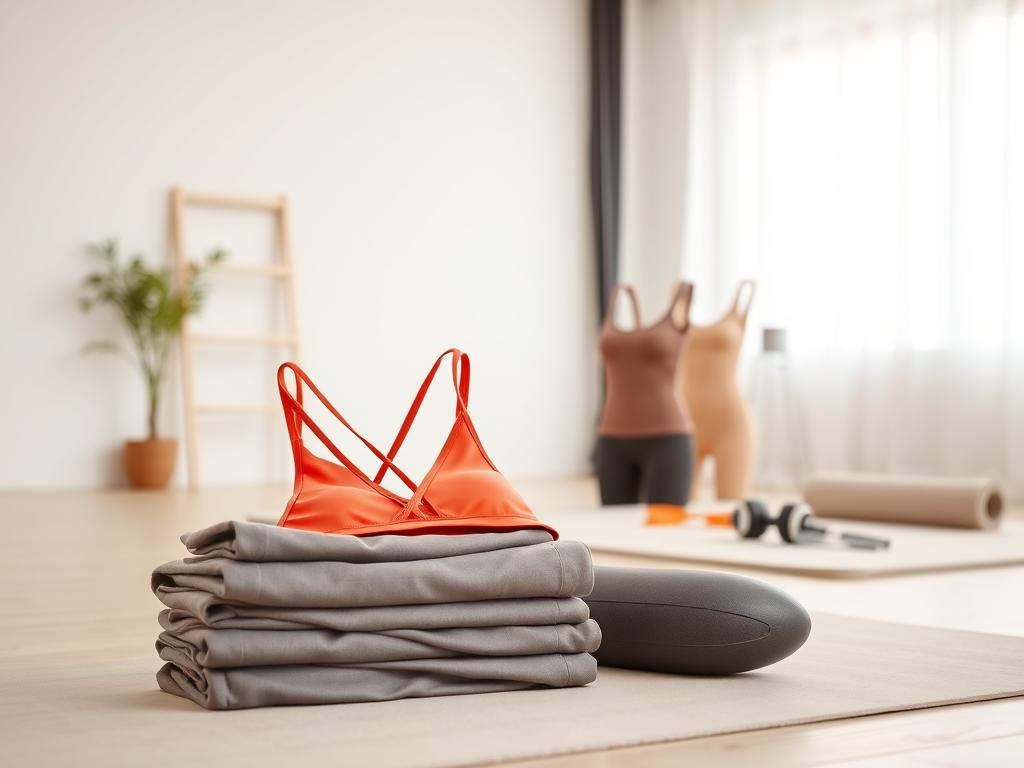
Choosing the Perfect Pilates Outfit
Comfort and functionality are paramount in Pilates dress code. Ideal clothing allows maximum movement whilst providing support and flexibility.
- Opt for fitted tops that won’t interfere with your movements7
- Choose stretch leggings or bike shorts that feel like a second skin7
- Select a low-impact sports bra for optimal support7
Form-Fitting Clothing Recommendations
Most instructors prefer form-fitting Pilates clothing. About 75% recommend fitted tops for easy form checking.
Compression pants are popular among male participants. 70% appreciate how they help check body alignment during exercises7.
Footwear and Grip Considerations
Pilates is typically done barefoot, but grip socks are gaining popularity. Around 70% of Reformer class participants use them for stability and hygiene7.
| Pilates Clothing Item | Recommended Price Range | Popular Brand |
|---|---|---|
| Sports Bra | $30-$128 | Alo Yoga |
| Leggings | $64-$128 | Lululemon |
| Grip Socks | $16-$38 | Lucky Honey |
What to Avoid in Pilates Class
Avoid items that could restrict movement or damage equipment. Steer clear of:
- Clothing with zippers or sharp embellishments
- Extremely loose garments that might get caught in equipment
- Jewellery that could interfere with exercises
The right Pilates clothing boosts your workout experience. It provides comfort, support, and freedom to move8.
What do I need to do Pilates?
Starting Pilates requires understanding essential equipment for a successful practice. Proper preparation can greatly enhance your workout experience. This applies whether you’re exercising at home or in a studio9.
- A high-quality workout mat for comfort and support9
- Grip socks with anti-slip features for stability9
- Comfortable, form-fitting workout clothing
- Water bottle for hydration
Optional equipment can boost your Pilates practice and offer new challenges:
| Equipment | Purpose |
|---|---|
| Yoga Blocks | Improve alignment and provide modifications9 |
| Pilates Ring | Add resistance and promote optimal posture9 |
| Resistance Bands | Activate broader muscle groups9 |
Remember, most studios provide essential equipment, so you can start with minimal personal gear10.
For best results, try an introductory Pilates session. This helps you learn proper techniques and understand basic requirements10. Investing in Pilates essentials sets the stage for a rewarding fitness journey.
Must-Have Equipment for Beginners
Starting Pilates? You’ll need some key gear for a comfy, effective practice. The right accessories can boost your fitness journey significantly11.
Choosing Your First Pilates Mat
Your Pilates mat is crucial. Opt for one with good support and cushioning. A top-notch mat should be about 10mm thick for stability12.
The right mat can slash injury risk by half12. It’s a vital investment for your practice.
Basic Props and Accessories
- Resistance Bands: Critical for muscle engagement, start with lighter resistance and progress gradually13.
- Pilates Ring: Enhances core strength and muscle toning13.
- Foam Rollers: Support flexibility and muscle recovery13.
Personal Items for Class
Prepare for your Pilates session with these essential personal items:
- Water bottle
- Towel
- Grip socks for stability12
Grip socks are vital. They cut slips by 40% and help maintain proper form12.
The global Pilates industry is booming. It’s now worth £152.3 billion in 202311.
Pre-Class Preparation and Studio Etiquette
Pilates class prep involves more than just timely arrival. It’s about respecting the space, instructors, and other participants. Your approach can greatly affect your overall experience14.
Aim to arrive 10 minutes early to settle in comfortably. Clean grip socks are a must for safety and hygiene. All studios require them during class14.
Tell your instructor about any physical limits or recent injuries. This helps them suggest suitable exercise modifications15.
Studio rules stress personal space and equipment care. Always wipe down your Reformer or mat after class. This keeps the studio clean for everyone14.
Respect the shared space by keeping chat to a minimum during sessions. Focus on your practice instead. Following these rules ensures a positive experience for all16.
FAQ
Is Pilates suitable for beginners with no fitness experience?
Yes! Pilates welcomes all fitness levels. Exercises can be adapted to suit individual abilities. It’s perfect for beginners, regardless of current fitness or flexibility.
How often should I attend Pilates classes as a beginner?
Most instructors suggest 2-3 classes per week. This allows your body to adapt and improve. It also prevents overexertion while building strength and flexibility.
What should I wear to my first Pilates class?
Choose form-fitting, stretchy clothes that allow free movement. Comfortable leggings, fitted tops, and grip socks work well. Avoid loose clothing that might hinder movement or obstruct the instructor’s view.
Do I need to bring my own mat to a Pilates class?
While studios often provide mats, bringing your own is better for hygiene. Pick a mat that’s 4-6mm thick. This thickness offers proper cushioning and support during exercises.
How much does a typical Pilates class cost?
Prices vary by location and class type. Group mat classes usually cost £10-£25 per session. Private or reformer classes can range from £40-£80. Many studios offer special deals for new students.
Can Pilates help with back pain?
Indeed, Pilates is known for easing back pain. It strengthens core muscles and improves posture. Many physiotherapists recommend it as a therapy for back issues.
What is the difference between Pilates and yoga?
Both focus on mind-body connection, but Pilates emphasises core strength and precise movements. Yoga involves holding poses and has a spiritual aspect. Pilates concentrates more on physical conditioning and alignment.
How soon will I see results from Pilates?
Most people notice changes within 4-8 weeks of regular practice. You’ll likely see improvements in flexibility, posture, and core strength. Results may vary based on class frequency and personal fitness.
Is Pilates good for weight loss?
Pilates can support weight loss by increasing muscle mass and boosting metabolism. For best results, combine it with cardio exercise and a balanced diet.
Can I do Pilates if I’m pregnant?
Many Pilates exercises can be safely modified during pregnancy. Always consult your doctor first. Prenatal Pilates classes offer movements tailored for expectant mothers.
Source Links
- How to Prepare for a Beginners Pilates Class
- 11 Steps to Prepare for Your First Pilates Class
- What to Bring to Pilates Class (Complete Guide) — The Pilates Circuit
- Beginner’s Guide to Pilates: What You Need to Know – The Pilates Rooms Urmston
- Pilates: how does it work and who needs it?
- 4 Fundamentals of Pilates – Muse
- Here’s Exactly What to Wear to a Pilates Workout — 8 Pilates Class Outfit Ideas — Alo Moves
- Pilates Experts Say You Should Wear This to Your Practice
- The 10 Best Pilates Props to Upgrade Your At-Home Workout
- Your First Pilates Class: What to Expect and Need to Know
- Types of Pilates Equipment, Machines and Apparatus | Complete Pilates
- Pilates for Beginners: Essential Gear You Need
- Equipment Basics: Pilates – What Do I Need? – Physioroom Blog
- Pilates Etiquette 101: How to Make the Most of Your Reformer Classes
- How To Prepare For Your First Pilates Class
- The Pilates Class: How to Prepare and What to Expect on Your First Day
